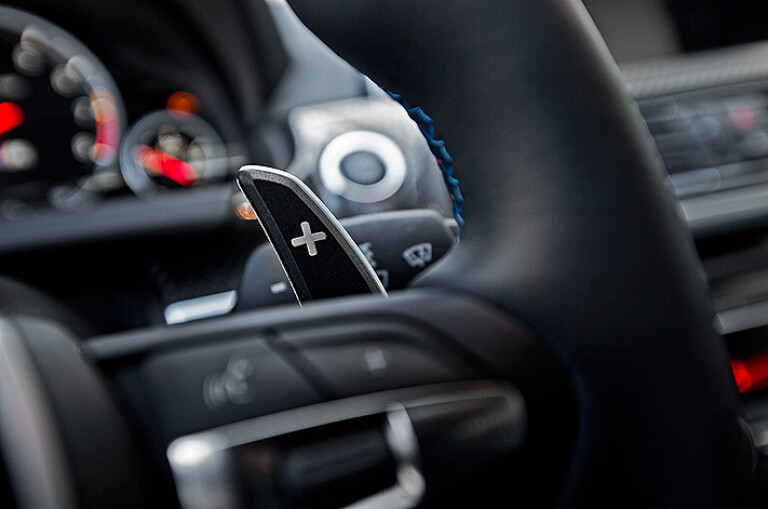
What are paddle shifters and why should you use them? Well, most of the time you don't need to touch them, but sometimes they're useful – or even just fun.
Most automatic cars these days have a manual mode, which allows you to change gears on demand instead of waiting for the gearbox to do its own thing.
Depending on the car, manual shifting can be done via the gear lever and/or a pair of racing-style paddle shifters behind the steering wheel.
No clutch is required because there’s no mechanical link between gear lever or paddle shifters, which simply work as a switch to send an electronic signal to the transmission to change gears.
JUMP AHEAD

If my car can shift its own gears, why have a manual mode at all?
Apart from giving you a more hands-on driving experience to express your inner racer, manual shifters have practical applications such as allowing you to select a lower gear when more power is required, to perform an overtake or climb a hill, towing heavy loads when engine braking is needed, when coming down an incline, or negotiating bends.
Automatic transmissions can’t anticipate upcoming hills or bends in the route, so by having control of your gearing, you can gear up or down a little earlier, which makes for smoother driving.
Manual mode is also handy for driving in slippery conditions such as snow, where you want to stay in first gear a little longer when you are moving off from a standstill. This is to ease torque to the drive wheels and prevent wheelspin (if your car has a Snow driving mode it will do that automatically when selected).
Using paddle shifters in Drive mode
You can easily engage manual shift while the transmission is in Drive (D), regardless of what gear the car is in. This is good when you just want to be hands on for a short time, such as when overtaking.
The car will automatically revert back to Drive if you rev too high, too low, come to a stop, or simply leave the paddles untouched for a while.
What is sequential mode?
Some cars have a Sequential (S) or Manual mode (M) which you generally choose by flicking the gear lever to S or M. This allows for greater driver control, with the transmission electronics stepping in should you rev too low or high. If you want to return to full automatic mode, simply flick the gear lever back to Drive.
Whichever mode you select, the car’s computer won’t let you stall and has rev-limiters to prevent engine damage.

Using paddle shifters
Simply pull the left shifter (marked -) to gear down, and right shifter (+) to gear up. When you pull on a shifter an indicator on the dashboard will display what gear you’re in.
Similar to driving a manual car, you can shift gears between 1500 to 2500 RPMs for normal driving, though if you want to deploy its full power, you can take it up to the redline, rev-limiter permitting.
When gearing up or down, don’t expect an instant response from the engine – give it about the same time to respond as it would take when selecting gears in a full manual car.

Using the gear lever
The same rules apply with gear levers that allow for manual shifting. Like the paddles that are marked with - and + on the side, shift the gear lever toward + to go up a gear, and - to downshift.
A lot of cars have a forward upshift, the thinking being that you would push the gear lever forward to go faster. But some car manufacturers, and most purists, prefer the opposite – with a forward downshift that’s in keeping with the forward force felt when braking.

COMMENTS